Lined diaphragm valves are integral to systems requiring precise fluid flow control in diverse industries. By offering enhanced resistance to corrosive and abrasive media, these valves adapt to a variety of applications, from sanitary diaphragm valves in the food and pharmaceutical sectors to more complex configurations like the 3 way diaphragm valve for advanced flow management. Whether you’re examining the reliability of rubber-lined valves or the chemical resilience of fluorine-lined options, each type serves distinct operational needs. Additionally, modern solutions such as the pneumatic diaphragm valve enable automated control, further optimizing performance across critical processes.
Introduction to Lined Diaphragm Valves
A lined diaphragm valve is a critical component in fluid control, designed to handle a variety of challenging media across industries. Known for their durability and precision, these valves are widely used in systems that demand high performance and reliability. Diaphragm valve manufacturers have refined designs to meet specific requirements, offering solutions like the air actuated diaphragm valve for automated operations. Incorporating innovative features such as the diaphragm valve pneumatic actuator, these valves deliver consistent functionality, even in highly demanding environments.
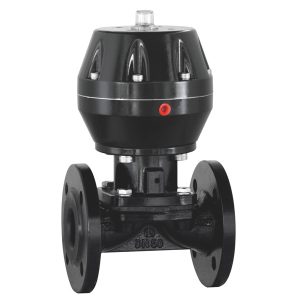
Diverse applications of diaphragm valves
Diaphragm valves demonstrate remarkable versatility, making them essential in industries like chemical processing, water treatment, and pharmaceuticals. Their unique design allows for precise flow control and compatibility with a range of media, from corrosive chemicals to clean water and sterile solutions. Whether handling aggressive substances in harsh conditions or ensuring sanitary requirements in sensitive environments, lined diaphragm valves adapt seamlessly, offering reliable performance across diverse operating conditions.
Versatility of lined diaphragm valves
Lined diaphragm valves are highly versatile, capable of managing a wide range of media, including corrosive chemicals, abrasive slurries, and sterile solutions. Their adaptability makes them ideal for use in diverse industries such as chemical processing, water treatment, and pharmaceuticals. By providing precise flow control and exceptional durability under varied conditions, these valves play a critical role in ensuring efficient and reliable operations across numerous applications.
Sanitary diaphragm valves
Sanitary diaphragm valves are essential for ensuring hygiene in industries like food, beverage, and pharmaceuticals, where maintaining clean, uncontaminated processes is critical. Their smooth, crevice-free design prevents the buildup of residue, making them ideal for managing sterile solutions and sensitive media. Engineered to meet stringent sanitary standards, these valves provide reliable performance and precise control while safeguarding product integrity and compliance with regulatory requirements.
Rubber-Lined Diaphragm Valves
Rubber-lined diaphragm valves are designed for durability and effective handling of abrasive media such as slurries and less aggressive chemicals. Their abrasion resistance and cost-efficiency make them a preferred choice for industries requiring reliable performance in moderate conditions. Compared to fluorine-lined valves, which specialize in managing highly corrosive substances, rubber-lined options offer a more economical solution for applications with standard chemical resistance needs.
Characteristics
Rubber-lined diaphragm valves are engineered for maximum durability and resistance to harsh operating conditions. The rubber lining enhances their abrasion and corrosion resistance, making them ideal for handling aggressive media, including slurries and corrosive chemicals. These valves deliver precise flow control and superior sealing performance, minimizing leakage in critical applications. Their versatility makes them a trusted solution across industries such as mining, chemical processing, and water treatment, ensuring reliable operation in demanding environments.
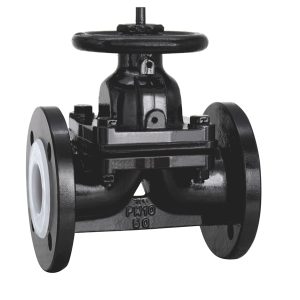
Applications
Rubber-lined diaphragm valves are extensively utilized in industries such as mining, chemical processing, and water treatment, where they excel in managing abrasive slurries and corrosive chemicals. Their superior sealing capabilities and resistance to wear ensure reliable performance in critical applications, from slurry transport in mining operations to controlling chemical flows in industrial processes. These valves are a go-to choice for ensuring efficiency and safety in demanding environments.
Rubber-lined diaphragm valves Define
Rubber-lined diaphragm valves are designed with an elastic rubber lining that provides excellent resistance to wear and abrasion. Their robust construction and flexible diaphragm make them ideal for managing less aggressive chemicals, abrasive slurries, and semi-solid media in industries such as mining, water treatment, and general processing. These valves offer reliable sealing and durability, making them a cost-effective solution for applications where harsh conditions do not require high levels of chemical resistance.
Explore the benefits of rubber-lined options for industries like wastewater treatment and mining.
Rubber-lined diaphragm valves offer significant benefits for industries such as wastewater treatment and mining by providing exceptional durability and resistance to abrasion. These valves handle challenging media like abrasive slurries and semi-solids effectively, ensuring long-lasting performance even under demanding conditions. With their cost-effective design and reliable sealing, they are an ideal choice for maintaining productivity and reducing maintenance in these tough industrial applications.
Introduce the role of pneumatic diaphragm valves in systems that require automation or additional control efficiency.
Pneumatic diaphragm valves play a key role in systems demanding automation and advanced control efficiency. Powered by compressed air, these valves enable precise flow regulation, ensuring accurate and reliable operation in industrial applications. Their responsiveness and compatibility with automated systems make them indispensable for enhancing productivity and reducing manual intervention in processes like water treatment, chemical handling, and other medium-flow industries.
Fluorine-Lined Diaphragm Valves
Fluorine-lined diaphragm valves are engineered to withstand highly corrosive environments, offering exceptional chemical resistance unmatched by rubber-lined alternatives. These valves are specifically designed for applications involving aggressive substances, such as strong acids and alkalis, ensuring long-term reliability and performance. While typically more costly, their superior resistance to extreme chemicals makes them indispensable for industries with stringent corrosion control requirements, setting them apart from the more economical rubber-lined options.
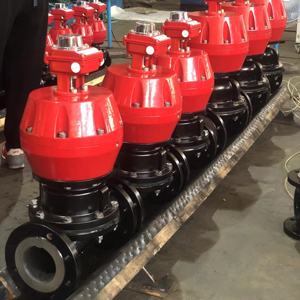
FeaturesFluorine-lined diaphragm valves stand out for their exceptional chemical resistance, designed to handle aggressive substances such as strong acids and alkalis with ease. They excel in applications requiring durability in extreme environments, maintaining consistent performance even under harsh conditions. These valves are built to deliver superior reliability, making them a critical asset for industries needing precise control over highly corrosive media.
Unique Benefits
Fluorine-lined diaphragm valves offer unparalleled chemical resistance, making them essential for handling highly corrosive substances like strong acids and alkalis. Their robust design ensures longevity and consistent performance, even in the most demanding environments. These valves enhance operational safety and efficiency by providing precise control over aggressive media, reducing downtime, and minimizing the risk of equipment failure.
Discuss fluorine-lined diaphragm valves, emphasizing their superior chemical resistance and thermal stability.
Fluorine-lined diaphragm valves are engineered to provide unmatched chemical resistance and excellent thermal stability, making them ideal for handling highly aggressive or corrosive media. Their fluorine lining ensures durability and reliable performance under extreme conditions, such as high temperatures and exposure to harsh substances. These valves are indispensable in industries like chemical processing and petrochemicals, where precision and resilience are essential for maintaining operational integrity and safety.
Provide examples of environments where fluorine lining excels:
In handling aggressive chemicals or extreme temperatures
Fluorine-lined diaphragm valves excel in environments where aggressive chemicals or extreme temperatures challenge standard materials. They are indispensable in chemical manufacturing, where highly corrosive acids demand exceptional resistance, and in the petrochemical industry, where high thermal stability ensures safe operation under intense heat. These valves provide reliable performance in scenarios like managing concentrated alkalis, volatile solvents, or high-temperature steam, ensuring durability and precision in the most demanding conditions.
3 way diaphragm valve
3-way diaphragm valves featuring fluorine linings are expertly designed to manage complex flow paths, offering versatile control for mixing or diverting fluids. Their unique configuration, combined with superior chemical resistance and thermal stability, ensures reliable performance in demanding environments such as chemical processing or high-temperature systems. These valves provide precision control and durability, making them a preferred choice for industries that prioritize operational flexibility and robust materials in handling aggressive media.
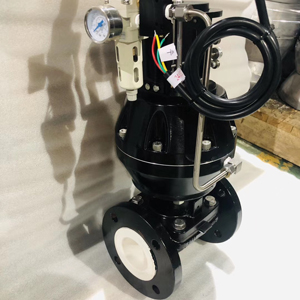
Comparative Analysis
Rubber-Lined
Rubber-lined diaphragm valves are a cost-effective choice for managing abrasive slurries and less aggressive chemicals, thanks to their excellent abrasion resistance and reliable performance in standard industrial operations. While they lack the extreme chemical resistance of fluorine-lined alternatives, their affordability and durability make them a practical solution for environments where exposure to highly corrosive substances is not a primary concern. These valves strike a balance between performance and economy, fitting seamlessly into applications with moderate chemical handling requirements.
Fluorine-Lined
Fluorine-lined diaphragm valves excel in environments requiring superior chemical resistance, effectively managing highly corrosive substances such as strong acids and alkalis. Their robust construction ensures unmatched durability and reliability, even in extreme conditions, making them ideal for applications where corrosion control is critical. Compared to rubber-lined alternatives, fluorine-lined valves are designed for specialized use cases with more demanding chemical exposure, justifying their higher cost with exceptional performance and long-term operational benefits.
Compare the material properties, resistance to chemicals, and cost considerations between the two types of lined diaphragm valves.
Rubber-lined diaphragm valves provide excellent abrasion resistance and cost efficiency, making them ideal for handling slurry or moderately aggressive media in industries like mining and wastewater treatment. On the other hand, fluorine-lined valves offer unparalleled chemical resistance and thermal stability, making them suitable for highly corrosive or high-temperature environments, such as chemical processing and petrochemical applications. While rubber linings are more economical, fluorine linings justify their higher cost with performance under extreme conditions, allowing industries to select the option best aligned with their operational demands.
Industry-specific examples to showcase how diaphragm valve manufacturers recommend one type over the other depending on application requirements.
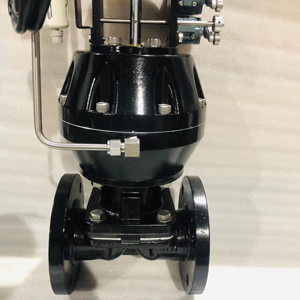
Manufacturers often recommend rubber-lined diaphragm valves for industries like mining and wastewater treatment, where cost efficiency and abrasion resistance are key for handling slurry or lightly corrosive media. Conversely, fluorine-lined valves are advised for chemical processing and petrochemical sectors, where handling highly corrosive acids or extreme temperatures demands superior chemical resistance and thermal stability. This decision-making process hinges on balancing operational needs, environmental conditions, and cost considerations to provide the optimal solution for each application.
Briefly touch on how air actuated diaphragm valves, using advanced diaphragm valve pneumatic actuators, can enhance performance in both types.
Air-actuated diaphragm valves, integrated with advanced pneumatic actuators, significantly enhance the performance of both rubber-lined and fluorine-lined valves by offering precise, automated control over flow processes. This enhanced functionality improves efficiency and consistency in industrial applications, whether managing slurry in mining with rubber linings or handling corrosive chemicals in petrochemical industries with fluorine linings. By reducing manual intervention and enabling rapid response to system demands, these actuators ensure reliability, safety, and optimized operations under varying conditions.
Choosing the Right Lined Diaphragm Valve for Your Needs
Selecting the right lined diaphragm valve hinges on thoroughly assessing your application’s chemical compatibility, cost constraints, and operational demands. Rubber-lined valves are optimal for less aggressive chemicals and abrasive slurries, offering an economical solution for general industrial use. Conversely, fluorine-lined valves provide the superior chemical resistance required for managing highly corrosive substances in critical environments. By aligning the valve’s features with your specific process requirements, you can achieve enhanced performance, safety, and long-term value.
Provide a decision-making guide based on factors like fluid type, operating conditions, and budget.
Selecting the right lined diaphragm valve depends on thoroughly evaluating fluid type, operating conditions, and budget. For abrasive fluids or moderate corrosion, rubber-lined valves offer cost-effective durability, making them ideal for mining or wastewater applications. However, when dealing with highly corrosive chemicals or extreme temperatures, fluorine-lined valves are the superior choice due to their exceptional resistance and stability, often suited to chemical or petrochemical industries. Balancing operational demands with budget considerations ensures you choose a valve that maximizes performance and lifespan in your specific application.
Explain how industries such as food processing, pharmaceuticals, and chemicals might prioritize sanitary diaphragm valves or fluorine-lined options.
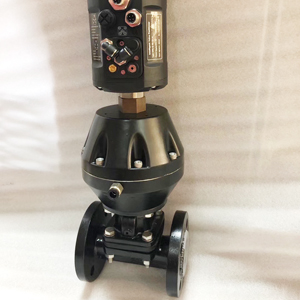
Industries like food processing and pharmaceuticals often prioritize sanitary diaphragm valves due to their hygienic design, which ensures contamination-free flow and compliance with stringent regulatory standards. Smooth, crevice-free surfaces and biocompatible materials make these valves essential for applications demanding sterility. On the other hand, the chemical industry frequently opts for fluorine-lined diaphragm valves to handle highly corrosive substances or extreme temperatures, prioritizing robust chemical resistance and reliability. Each choice reflects the industry’s need to balance performance, safety, and adherence to application-specific standards.
Highlight the role of diaphragm valve manufacturers in offering customized solutions, ensuring regulatory compliance and optimized performance.
Diaphragm valve manufacturers play a vital role in delivering tailored solutions that meet industry-specific needs, ensuring regulatory compliance and peak performance. By leveraging their expertise in material selection, valve design, and advanced manufacturing processes, they address unique operational challenges across sectors such as pharmaceuticals, food processing, and chemicals. Whether customizing valves for hygienic applications or enhancing durability for aggressive media, manufacturers prioritize quality control and precision to provide solutions that align with stringent standards and optimize system efficiency.
FAQ lined diaphragm valve
1. What are the primary differences between rubber-lined and fluorine-lined diaphragm valves?
Rubber-lined diaphragm valves are designed for handling less aggressive chemicals and abrasive slurries, making them a cost-effective choice for general industrial use. On the other hand, fluorine-lined diaphragm valves excel in managing highly corrosive substances, such as strong acids and alkalis, thanks to their superior chemical resistance. While rubber-lined options are more economical, fluorine-lined valves provide unmatched durability in extreme environments, offering a reliable solution for critical applications.
2. Can rubber-lined and fluorine-lined valves be used as sanitary diaphragm valves?
Both types of lined diaphragm valves can be applied in clean processes, but fluorine-lined valves are more commonly suited for sanitary diaphragm valve applications where strict corrosion control is required. Rubber-lined valves may not offer the necessary resistance to harsh cleaning agents or strong chemicals often used in sanitary environments, making them less ideal for industries like food and pharmaceuticals.
3. Are there differences in compatibility when using rubber-lined or fluorine-lined options with pneumatic diaphragm valves or 3 way diaphragm valves?
Rubber-lined diaphragm valves work well with pneumatic diaphragm valve systems in applications involving moderate chemical exposure and abrasive materials. However, for 3 way diaphragm valve setups or processes requiring precise management of highly corrosive media, fluorine-lined options are the preferred choice due to their ability to withstand severe chemical environments while maintaining performance and reliability.
Conclusion lined diaphragm valve
Choosing the right lined diaphragm valve is essential for ensuring optimal performance, safety, and cost-efficiency in your operations. Rubber-lined valves are the go-to option for applications involving less aggressive chemicals and abrasive slurries, offering an economical yet reliable solution for general industrial needs. Meanwhile, fluorine-lined valves provide unmatched chemical resistance and durability, making them indispensable for handling highly corrosive substances in critical environments. With options ranging from an air actuated diaphragm valve to systems integrated with a diaphragm valve pneumatic actuator, selecting the correct design and lining material is vital. Collaborating with experienced diaphragm valve manufacturers can help you identify the most suitable valve tailored to your application’s specific requirements, ensuring long-term efficiency and reliability.
